What was your lockdown special place? I think most of us had one: somewhere away from home, where we could exhale, enjoy a change of scene and appreciate the peace and beauty of our surroundings. A park perhaps, a riverside or a wood? For Jess Rickenback and Rachel Hein, that place was the path beside the Seafield sewage works in Edinburgh. “Unloved, litter and dog poo strewn, and often very stinky,” says Hein, a photographer, who often took the path in lockdown with her husband, son and labrador, Finn.
“It frequently stinks. Really stinks,” agrees Rickenback, a PhD student in atmospheric and environmental science. “It’s conventionally very unattractive.” Her picture confirms their shared verdict: under a leaden sky, a chain-link and barbed wire fence on which trapped plastic bag remnants flap in the wind like grim bunting surrounds weather-beaten grey cylinders, rectangles, and a sphere – child’s building blocks made by a brutalist for a giant. On the other side of the fence, a scrubby grass verge is littered with takeaway cartons and cans. Yet both feel affection for the sewage works path. “It’s a surprisingly tranquil spot,” says Rickenback, who enjoys its “apocalyptically sci-fi” aesthetic. For Hein, it’s a “portal” to the beach beyond.
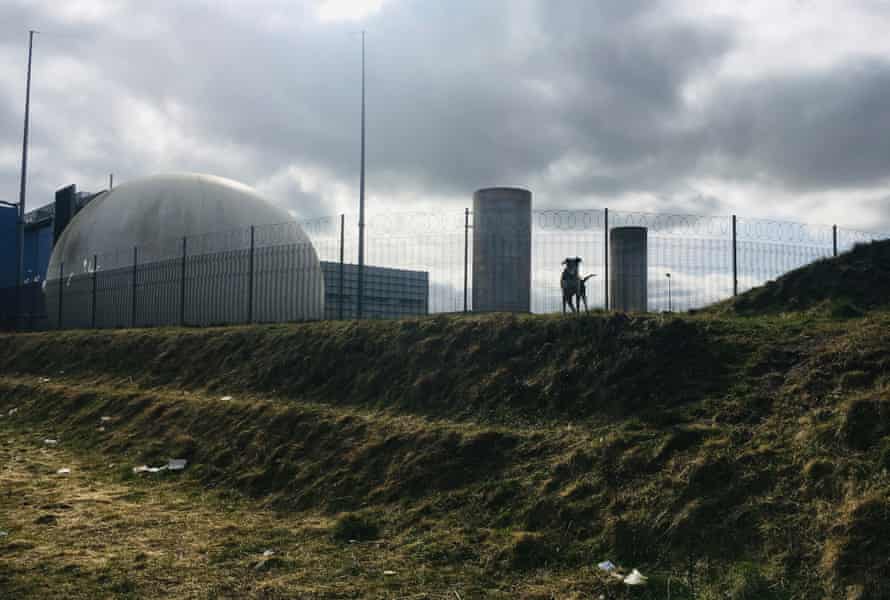
In March, when the Guardian asked readers to share their favourite bleak places, no one expected the Seafield sewage works to be so popular. Another local resident, Timothea, a furloughed bartender and gallery attendant, also became a fan in lockdown. “The combination of evening sunshine, coastal air and exploring somewhere new reminded us of visiting friends in Sicily … That sounds like a stretch but the fly-tipping is quite authentically Sicilian.” She, too, accepts the bouquet is sub-optimal: “It’s very smelly.”
Readers also sang the praises of plenty of other unpromising spots, from a contaminated riverfront wasteland in Kent to a “power station promenade” in Lancashire, taking in motorway bridges in Devon, Warwickshire car parks, an abandoned building in Brighton, a further education college in Dublin and various scraps of forgotten or unloved land that defy description but catch the eye and the imagination. I, too, love bleak places: I have just moved house and am in the process of discovering new ones on the hunt for quiet places to walk my dog in this new corner of York. There is an intermittently muddy path that runs, then peters out, along a dank, trolley-filled waterway called Tang Hall Beck, and another through a 1980s housing estate that gives way to a completely incongruous field of cows grazing in front of a multiplex cinema.
What is the appeal? As Rob Walker, the author of The Art of Noticing and an advocate of exploring the unexpected undersides of cities points out, there has always been a constituency of fans for these types of places. Reviewing the pictures submitted by readers, Walker notes that many have been “heavily tagged” with graffiti, “indicating that others have discovered them: there are signs of life. They didn’t need the pandemic to be adventurous.” These spaces have always offered a challenge: “A lot of them aren’t really designed for humans, which accidentally lends them an air of excitement, or discovery, or a kind of accidental wildness.”
There’s also an aesthetic appreciation of the dilapidated that is not new. “People are attracted to this kind of beautiful decay,” says Walker. The Lost Collective , a long-term project by Australian photographer Brett Patman, which documents haunting, abandoned, industrial spaces is one example, as is the surprisingly beautiful tour I once took of the abandoned steelworks and factories of Charleroi in Belgium, voted “ugliest city in the world”.

Describing his attachment to Anston House, a dilapidated former office block turned squat named “Brighton’s ugliest building”, Dom Martin, who works for an online ethical retailer, noted its “niche allure to a certain special few.” Seemingly confirming that it has since been demolished to make way for luxury flats: “I doubt these will make my heart skip a beat in the same way.”
But pandemic living – geographically constrained, craving novelty and wary of the crowds – has taken the allure of these spots beyond niche. More and more people have discovered the discreet (at times frankly imperceptible) charm of objectively unlovely places. With more time on our hands and limited options for how to spend it, many of us developed a new appreciation of the exceptional in our everyday, unsung landscapes. There is a heightened, more granular quality to our observation of them too: tiny quirks of street architecture, the shifting panorama of rubbish and the unexpected cohabitation of the human and natural worlds have all caught the eye.
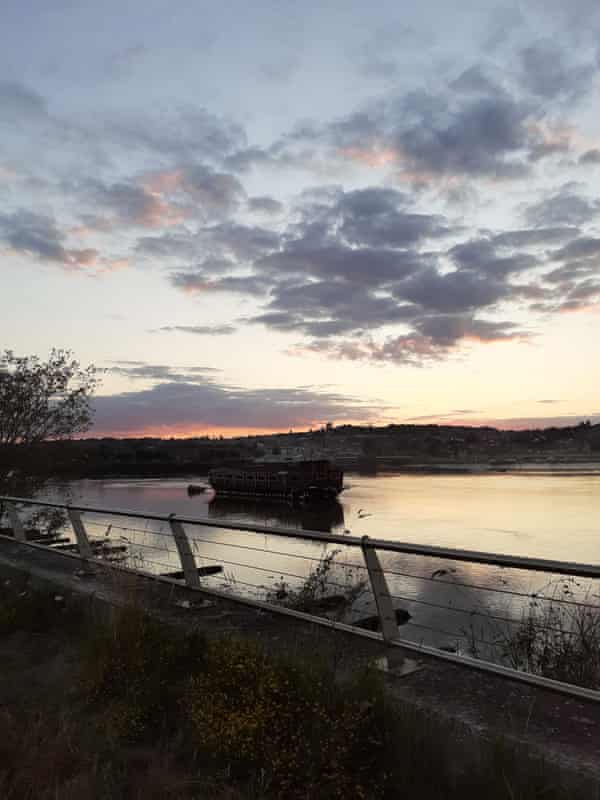
These are places where the imagination can run riot. During the pandemic months, Emma from Rochester traced the evolution of what she and her partner call “the wasteland” – a patch of contaminated ground on the riverside. The hi-vis-clad workmen testing pollution, clods of earth left by amateur golfers, a vast ship turning in the river and kestrels and a skylark overhead. “Last summer we noticed a blue rope tied to the railings, hidden behind a large buddleia … and weighted down into the water to something suspended below. We joked that maybe it was part of a drug-smuggling operation.” Over the weeks, she kept an eye on the rope, sometimes floating, sometimes weighted down, even once spotting three people in a speedboat heading towards it.
For Andrew Eckton, a teacher from Wanstead, east London, walking the North Circular section of the River Roding (“never more than 50m from the eight-lane section of the road”), watching the water rise and fall and the graffiti evolve over the seasons became a mental escape hatch: “An open safe dumped in the river set my imagination creating its backstory”.
They are also places where our recent history, and the waxing and waning of human impact on the environment, are particularly apparent. Pat Roberts a retired council worker from Gloucester traces the city’s history in the toxic soil and dirty stream on the fringes of a housing estate “round the back of B&Q and Tesco”. “It tells the story of the extraordinary city and its decline, the cathedral tower so close, the farm tracks disguised as alleys that lead here from the inner suburbs, the casual industrial pollution, the city’s 2,000-year relationship with animals suddenly ceased. Longhorn Avenue, Dexter Way and Old Spot Walk are their epitaphs in the new streets.”
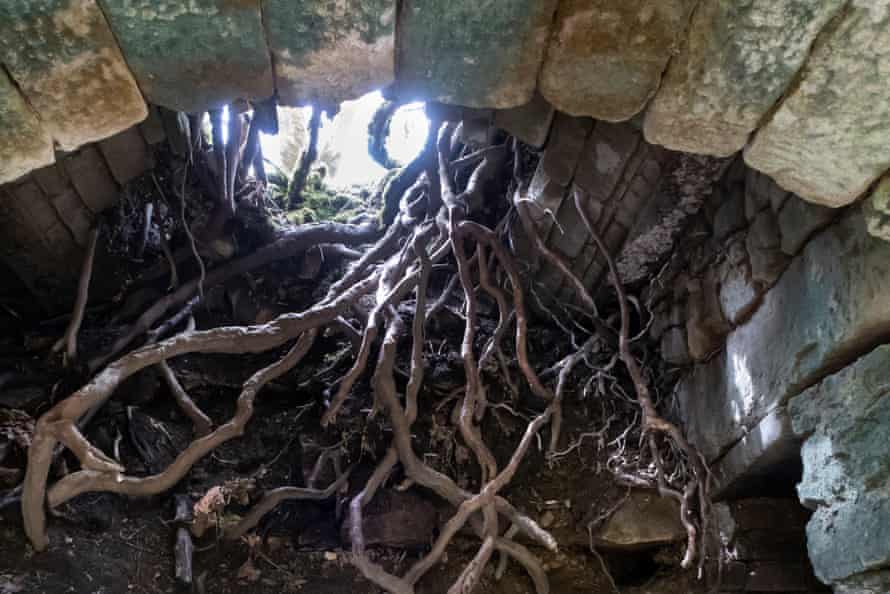
Architectural photographer Andy Marshall’s bleak spot, the Cheesden Valley, provides a visual account of the area’s industrial development from the late-18th to the early-20th century. “Out of the bog and gorse, battered sandstone gables rise like monoliths of the Industrial Revolution. Every time I visited during the pandemic, a different artefact would appear – full of the patterns and fashions of yesteryear.”
Another attraction of bleak spots, highlighted by many, is the way the natural world creeps back in when humans withdraw. “As a child, you appreciate small soft weeds, the plantains and dandelions that reclaim their sun and soil through concrete,” writes Richard Abbott of a favoured spot next to Wood Green bus depot, in north London. “Lockdown has brought me close to them again.” “Green pushes through defiantly,” as the author of the @leamjetaime Instagram account, highlighting unexpected parts of Leamington Spa puts it, describing a car-park-turned-Covid-testing-centre. Andy Marshall’s Cheesden Valley is “covered in moss, lichen, and roots – this place is slowly being reclaimed by nature”.
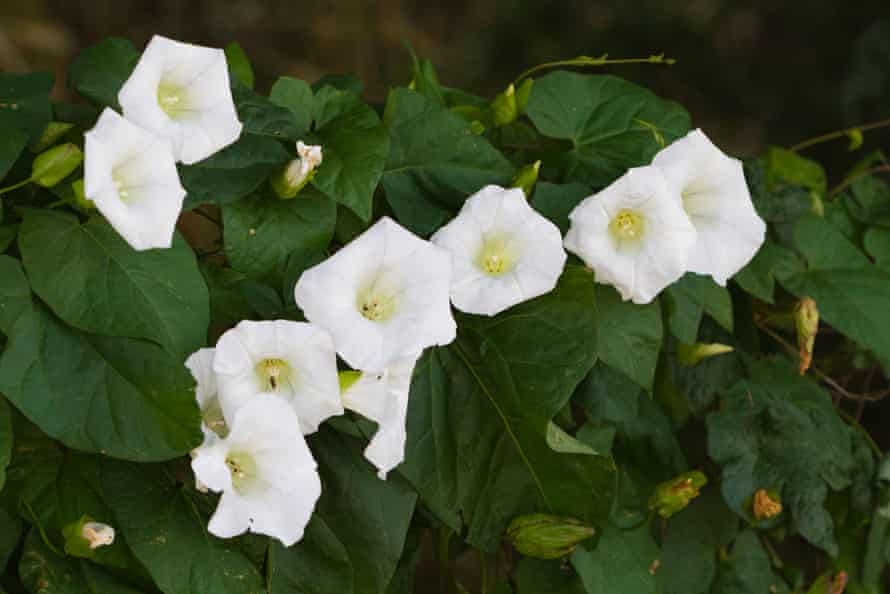

“Groomed things are lovely but actually sometimes nature needs space to make its own way,” says Natural History Museum botanist Dr Sandra Knapp, an enthusiastic admirer of the tenacious and opportunistic plant species that thrive in wastelands and in the cracks and scrubby ground that make up much of our cityscape. Many prefer neglected areas, which escape the attention of the council strimmer and weedkiller. She highlights unloved “volunteers” – a nicer word than weed – such as shepherd’s purse (“it’s completely adorable”), bindweed (“the flowers are twirly things that look like ice-cream cones, they’re just gorgeous”) and ragwort (“not exceptionally beautiful, but a little cheery bit of yellow between the railway tracks”) as an essential resource for pollinators as well as an aesthetic joy in their own right. “They have nectar and pollen, they attract herbivores (caterpillars and things like that). When you start noticing plants, you start noticing insects. It just makes the world ever so much bigger, because you share it with other things.”
Philip Strange, a naturalist and writer, writes poetically of exactly that in an ordinary Totnes car park that is home to “hairy footed flower bees feeding from three-cornered garlic … and beautiful orange tip butterflies mating and laying eggs on the garlic mustard. On a sunny day last week, I saw three species of solitary mining bee, while wrens trilled loudly but unseen.” The joy of spotting wildlife is heightened by less than idyllic surroundings, I think: there are kingfishers living along Tang Hall Beck and my walks are enlivened by the hope of a flash of brilliant blue.
Prof Mark Fellowes, of the University of Reading, an expert on urban ecosystems, is not surprised. Many industrial sites and urban wastelands, he says, are much richer in biodiversity than the farmland we traditionally associated with “nature”. “We think of brownfield sites as quite ugly, but there can be a beauty to it when you look at the plants and animals that are there.” Paradoxically, pollution can help: if an area is sufficiently contaminated, it is left for plant life to reclaim and animals are reassured by the lack of footfall. Concrete, in particular, can be an exceptional habitat. “It’s warm, it absorbs a lot of heat, it’s lots of friable material so there are nooks and crannies and bits to get into.”
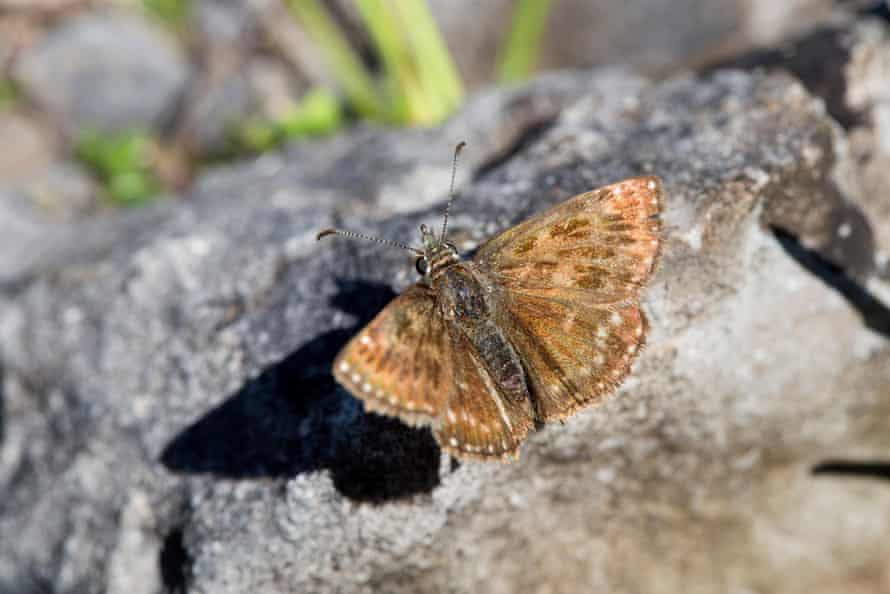
Fellowes highlights the bluntly named “dingy skipper” butterfly (“it’s a bit moth-like, a bit dull”) which is in vertiginous decline, but thrives in these unlovely places, and the rare “streaked bombardier beetle”, which is “only found on a couple of brownfield sites in the UK”. Warmth and insect life can in turn encourage reptiles: this has happened at the abandoned Greenham Common airbase, in Berkshire, which has lizards, slow worms and snakes. The question, of course, is how to preserve these habitats, which are often earmarked for future development. “Can we protect them, can we turn them into local nature reserves, can we engage people as we develop the area?”
It can be done. One of my favourite bleak-ish haunts in my old neighbourhood is a perfect example of this: tucked away behind the recycling centre on a light industrial state, York’s former municipal dump which attracted all manner of flora and fauna after it closed, has been lovingly, skilfully turned into a nature reserve.

Some of the attention brought to bear on bleak places is affectingly lyrical. Mollie Goldstrom, an artist and chef, describes her walks along the path by Nancekuke Common, a military site in Cornwall flanked by “the grim rank and file stumps of recently culled cauliflowers”. It’s a landscape of thick sun-warmed gorse “perfumed with coconut scent, and alive with bees”, with the “blinding white dome” of the RAF Portreath radar station catching the sun and, beyond, “a first breathtaking glimpse of the sea”.
Andy Thatcher, a film-maker from Exeter, is a fan of the River Exe M5 motorway bridge: “The colour of the concrete picks up the colours of the sky really well, making it especially beautiful around sunset. It’s also got an oddly beautiful curve to it, which makes being under it feel like being in some vast Greek temple.” During lockdown, Thatcher’s visits to the bridge were less frequent, but “all the more poignant”. He recalls a trip during the first lockdown: “The moon was out, poking its blue light into the dark depths of the concrete. There was barely a car around – the bridge is usually a continual roar, but, for the first time, I could listen to the reed beds and wetlands of the Exe estuary, the call of curlews echoing around the concrete.” The experience moved him to tears.
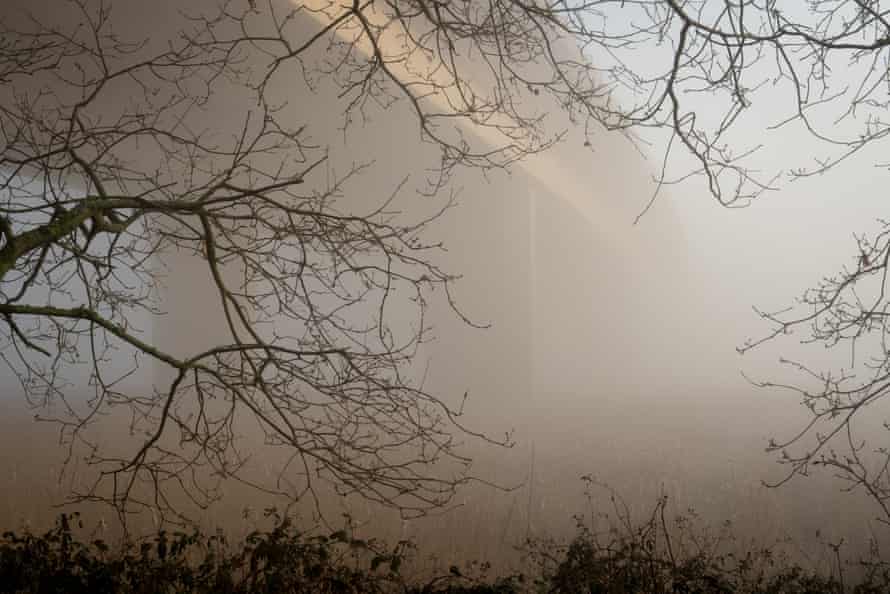
Now our horizons have started to widen again. Will we still see the poetry in our dumps, car parks and wastelands, and appreciate the havens they provide not just for beleaguered nature but also for us? David Nash, who has been walking the noisy, built-up canals beneath Birmingham’s Spaghetti Junction is committed to keeping it up: “I won’t be abandoning them at the first opportunity when all this weirdness is over. The canals of Birmingham are for life, not just for lockdown.” Walker is keen to try to encourage us to stick with noticing our immediate environments now we are free to escape them again: his newsletter is full of prompts to turn on our “appreciation sensors”. “Probably, we’re going to end up wanting to go back to Rome and that’s understandable. But there is wonder in your neighbourhood and it’s worth attending to. It would be great if we could walk away from this with that lesson learned.”
This content first appear on the guardian
